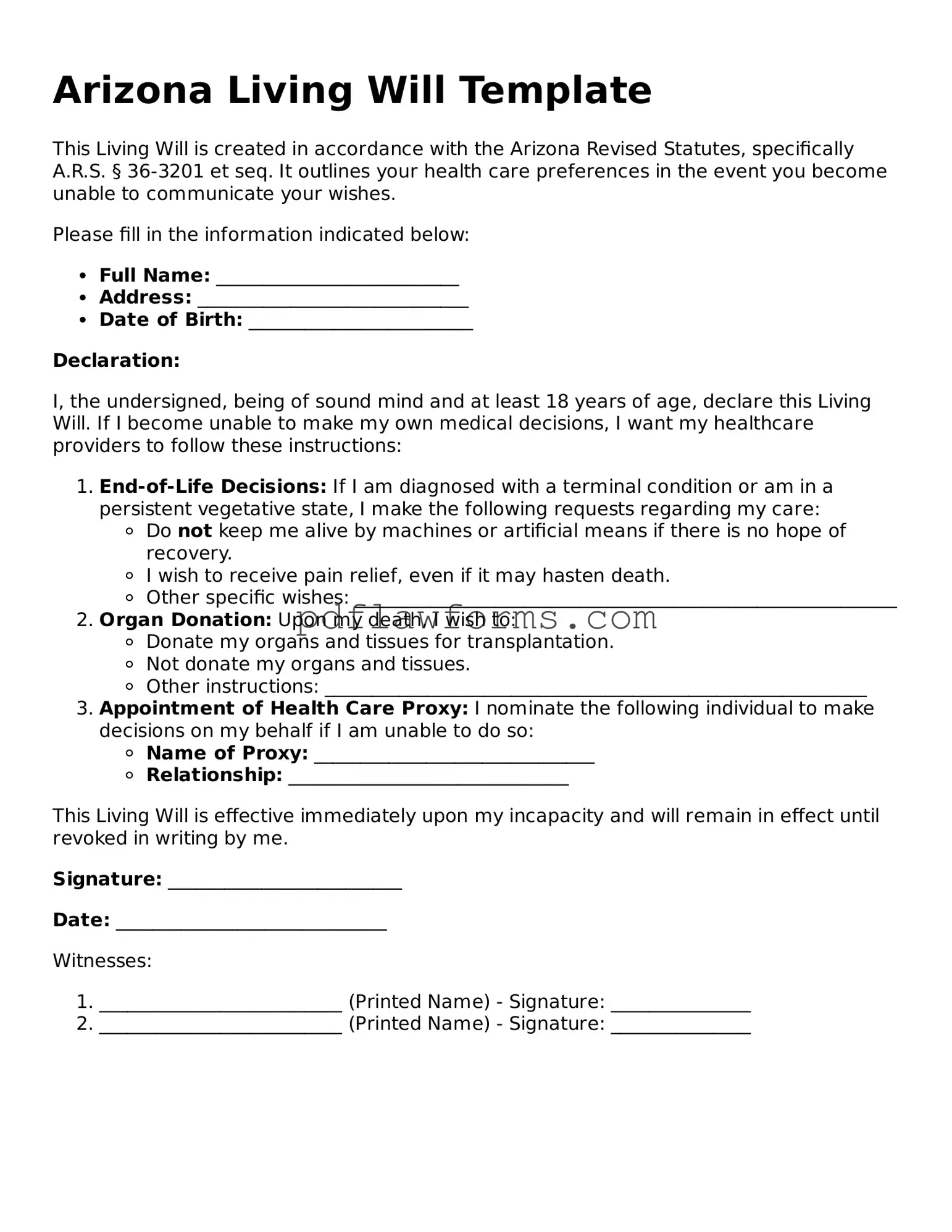Filling out a Living Will form in Arizona is an important step in ensuring that your healthcare preferences are honored. However, many individuals make common mistakes that can lead to confusion or disputes later on. Understanding these errors can help you avoid them and create a valid document that reflects your wishes.
One frequent mistake is failing to specify the types of medical treatments you do or do not want. A Living Will should clearly outline your preferences regarding life-sustaining measures, such as resuscitation and artificial nutrition. Without this specificity, healthcare providers may be uncertain about your wishes, potentially leading to unwanted interventions.
Another common error is neglecting to sign and date the form. A Living Will must be signed by the individual creating it to be considered valid. Additionally, dating the document is crucial, as it establishes when your wishes were recorded. If the document is unsigned or undated, it may be challenged or deemed invalid.
Some people overlook the importance of having witnesses. In Arizona, a Living Will must be signed in the presence of two witnesses who are not related to you and who do not stand to gain from your estate. Failing to have the required witnesses can invalidate the document, rendering your wishes unenforceable.
Individuals often forget to review and update their Living Will regularly. Life circumstances change, and so can your healthcare preferences. It is advisable to revisit your Living Will periodically, especially after major life events such as marriage, divorce, or the birth of a child. Keeping the document current ensures it accurately reflects your current desires.
Another mistake is using vague language. Terms like "heroic measures" or "extraordinary care" can be interpreted in various ways. It is essential to use clear and precise language to communicate your wishes effectively. This clarity helps avoid confusion for healthcare providers and loved ones during critical moments.
Some individuals do not discuss their Living Will with family members or healthcare proxies. Open communication about your wishes can prevent misunderstandings and conflict among family members. Sharing your preferences ensures that your loved ones are aware of your decisions and can advocate for them when necessary.
Finally, people sometimes assume that a Living Will and a Durable Power of Attorney for Healthcare are the same thing. While both documents are important, they serve different purposes. A Living Will outlines your medical preferences, while a Durable Power of Attorney designates someone to make healthcare decisions on your behalf if you are unable to do so. It is crucial to have both documents in place for comprehensive healthcare planning.
